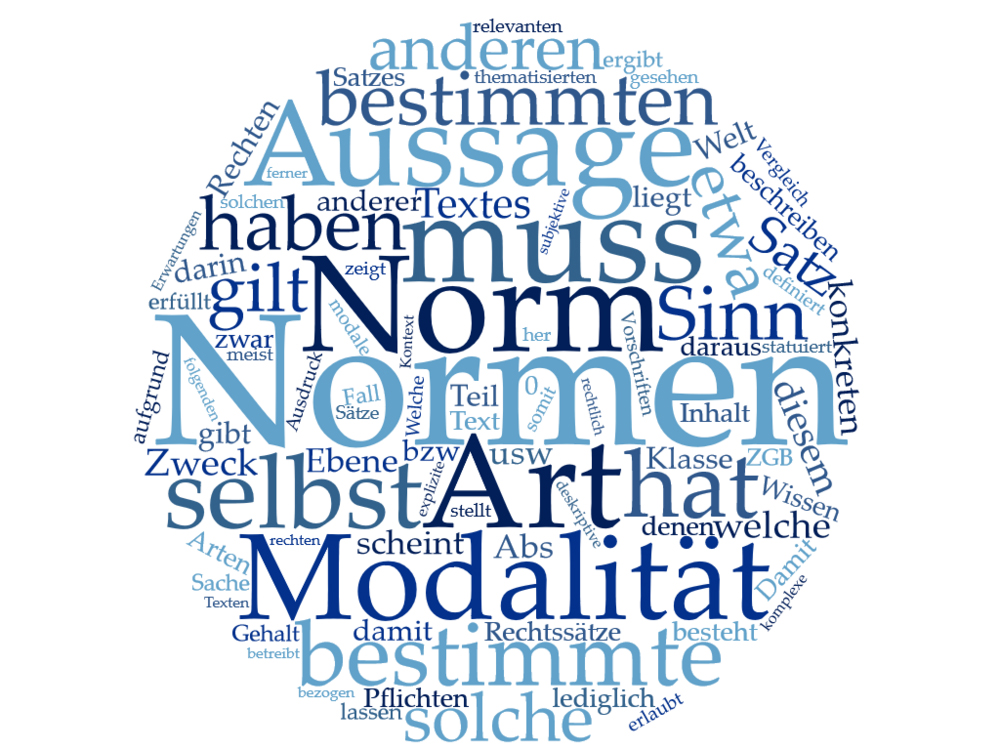Abstract
Rechtsnormen als Texte – Versuch einer Zusammenführung von Rechtstheorie und Linguistik: Rechtstheoretiker sind sich zwar bewusst, dass Recht wesentlich Sprache ist; diese Voraussetzung wird aber in der konkreten Analyse von Rechtsnormen und ihrer Struktur nur selten systematisch berücksichtigt; zumeist wird von der konkreten sprachlichen Form abgesehen oder der einzelne Satz wird als formale Größe absolut gesetzt. Dazu werden auch meist wichtige Erkenntnisse der Linguistik kaum berücksichtigt, etwa grundlegende Differenzierungen wie jene zwischen Satz und Text bzw. Grammatik und Äußerung oder Ausdruck und Inhalt. Dieser Beitrag versucht, Rechtsnormen als geschriebene Texte sui generis, d. h. als sprachliche Objekte, ernst zu nehmen und aus einem textlinguistischen Blickwinkel zu betrachten, durchaus im Horizont der Rechtstheorie und deren Erkenntnisinteresse, und die grundlegenden Eigenschaften von Rechtsnormen aus dieser zweifachen Perspektive deutlicher zu klären, etwa in Bezug auf die innere Struktur von Rechtsnormen, auf eine Typologie von Rechtsnormen, die Bedeutung von einzelnen Normen, das Verhältnis von innerer Struktur und äusserer Form oder die Adressatenfrage.
Legal Norms as Texts – An attempt to combine legal theory and linguistics: While legal theorists may well be aware of the fact that the law is essentially language, this aspect is only rarely taken into consideration in the concrete analysis of legal norms and their structure. It is generally the case that concrete linguistic forms are disregarded, or indeed, that individual phrases or sentences are taken to be as a formal, absolute whole. In addition, important linguistic characteristics are often scarcely examined – for, example, fundamental differences such as those between the sentence and the text, grammar and utterance, or expression and content. This article is an attempt to address the issue of legal norms as written texts sui generis, that is, as linguistic objects, and to examine them from a textual linguistic perspective. Moreover, legal norms will be thoroughly assessed within the context of legal theory and its academic insights, and the fundamental characteristics of legal norms will thus be clarified from both the legal and linguistic perspectives. Aspects include the internal structure of legal norms, a typology of legal norms, the meaning of individual norms, and the relationship between the internal structure and the external form or the question of who is being addressed.
Les textes normatifs (normes juridiques ou textes juridiques) sont des textes – Tentative de rapprochement entre le droit et la linguistique: Les juristes sont bien conscients du fait que le droit relève avant tout de la langue: ce pré requis n’est cependant que rarement pris en considération dans l’analyse concrète des textes juridiques et de leurs structures ; D’autant plus qu’en droit on fait abstraction de la forme langagière concrète pour élever la phrase au rang de grandeur formelle absolue. A cela s’ajoute le fait que certaines découvertes de la linguistiques sont à peine prises en compte, à l’image de différenciations essentielles telles que celles entre phrase, texte ou grammaire d’un côté et expression, formulation ou contenu, de l’autre. Cet article tente, d’une part de présenter les textes juridiques comme des textes écrits à part entière, c’est-à-dire comme des objets linguistiques et de les observer sous l’angle de l’analyse textuelle tout en gardant à l’esprit la théorie juridique et ses champs d’intérêt, et d’autre par d‘éclairer les caractéristiques essentielles des textes juridiques dans cette double perspective, par exemple en s’appuyant sur la structure interne des textes normatifs, la signification des normes, la relation entre structure interne et forme, et la question du public cible.

Dieses Werk steht unter der Lizenz Creative Commons Namensnennung - Nicht-kommerziell - Keine Bearbeitungen 4.0 International.
Copyright (c) 2011 Zeitschrift für Europäische Rechtslinguistik (ZERL)

